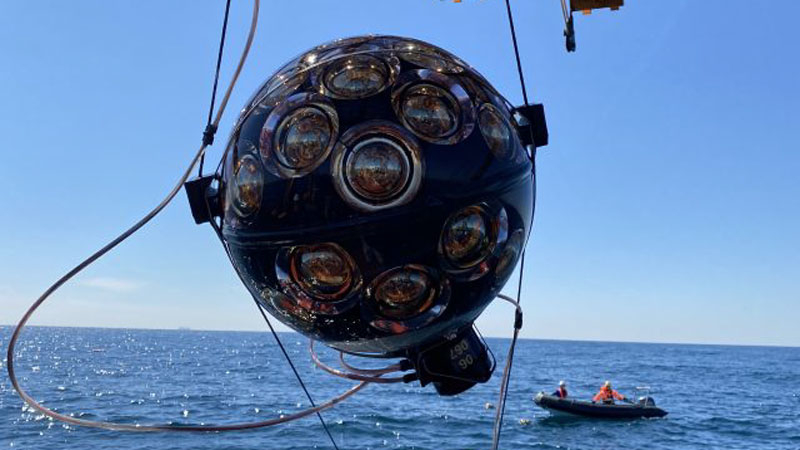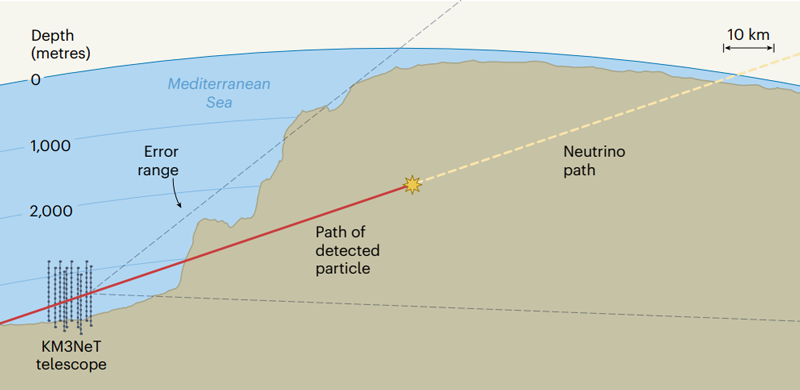The underwater neutrino observatory KM3NeT, which is being built in Europe, has reported its first unique result. The facility’s sensors have registered a neutrino of record-high energy — an order of magnitude or even more than anything previously recorded. A study of the detector signals has shown that this “superneutrino” was of extragalactic origin. There is no exact link to specific objects, but there are some clues.

A particle detector about to be lowered to the seabed. Image credit: Patrick Dumas/CNRS
Neutrinos are extremely difficult to detect. These particles interact weakly with matter — so weakly that at one time they were even considered candidates for the role of dark matter. In order for a neutrino to bind with a single atom with a 50% probability, it would have to fly through a wall of lead one light year thick. Moreover, the higher the energy of the neutrino, the lower the chances of detecting it. The only reason these particles are still detected is their unimaginably large number. After photons, neutrinos are the second most massive particle in the Universe. In this case, statistics are everything.
The record-breaking neutrino was detected by the KM3NeT detectors on February 13, 2023. The article in Nature was published on February 12, 2025. All this time, scientists were sorting out the signal to avoid mistakes. All this time, scientists were carefully analyzing the signal to exclude the possibility of mistakes. Today, it is possible to reconstruct the approximate course of events.
The neutrino was born outside our galaxy. Data reconstruction allowed us to determine the region of the sky from which it came. There are currently 12 blazars there — active galactic nuclei (black holes) whose jets are directed almost directly at Earth. Neutrinos of such high energies can arise both during the brightest processes in such objects and during the travel of cosmic rays of jets to Earth.
The mysterious neutrino hit the Earth at a shallow angle and, passing through the thickness of the Earth’s crust, reacted with matter. As a result of the interaction, the neutrino disintegrated, producing, among other things, a high-energy muon. This energetic (and short-lived) muon continued its movement and, passing through the array of sensors of the KM3NeT neutrino observatory, was registered by a significant part of them. The first sensors were even overloaded with unexpectedly high muon energy.

Image source: Nature 2025
The muon energy was between 60 and 230 PeV (petaelectronvolts). The energy of the neutrino that generated it should have been in the range of 120 to 220 PeV or even higher. Until now, the most energetic neutrinos recorded did not exceed 10 PeV. The “neutrino” that arrived from space exceeded all previously known results on these particles by at least an order of magnitude and turned out to be 10,000 times more powerful than can be obtained in modern terrestrial accelerators.
This discovery highlights the importance of the KM3NeT observatory, currently under construction. It is only 10% complete, but has already brought incredible productivity to science. In its final form, the observatory will consist of two sensor arrays: one at a depth of 2.5 km off the coast of Sicily (ORCA) and one at a depth of 3.5 km off the coast of France (ARCA). When fully operational, it will significantly accelerate neutrino research, which will be a powerful tool for studying the mysteries of the universe.